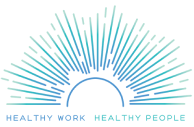Marnie Dobson Zimmerman, Ph.D. e Paul Landsbergis, Ph.D.
Suicídio: uma crise crescente nos EUA
Setembro foi o mês de prevenção e conscientização sobre o suicídio. Globalmente, mais de 700.000 pessoas morrem de suicídio todos os anos, e muitas mais tentam o suicídio ou têm uma grave crise de saúde mental (OMS 2022). Em 2022, mais de 49.000 pessoas morreram por suicídio nos EUA e 65% estavam em idade produtiva (18-64) (CDC 2022). As taxas de suicídio aumentaram nos EUA em 26% para homens e 53% para mulheres de 1999-2017, contribuindo para o declínio na expectativa de vida nos EUA. Nos grupos em idade ativa (15-64 anos), os aumentos tenderam a ser maiores – 27%-45% nos homens e 42%-93% nas mulheres. Entre 2000-2019, o taxa de suicídio nos EUA aumentou em 45% em comparação com quedas ou pouca mudança na taxa em outros países ricos.
Os homens dos EUA têm 4 vezes mais probabilidades de cometer suicídio em comparação com as mulheres, e várias profissões dominadas por homens têm um risco muito maior de suicídio, incluindo trabalhadores agrícolas e agricultores, socorristas e profissionais de saúde (especialmente médicos e dentistas). Taxas de suicídio nos EUA (2000-2014) foram mais elevadas entre as pessoas com ensino secundário, seguidas por aquelas com menos de ensino secundário e, em seguida, taxas mais baixas entre pessoas com diploma universitário.
Fatores de risco no local de trabalho para suicídio
Embora seja um exemplo extremo de como o trabalho influencia o suicídio, um grupo considerável de suicídios em França Telecom, no final da década de 1990 e início da década de 2000, resultou em penas de prisão para os CEO e outros executivos. Notas de suicídio foram deixadas por alguns dos mais de 40 trabalhadores que cometeram suicídio, culpando a cultura de trabalho hostil e tóxica, imposta pelos executivos, para forçar as pessoas a pedirem demissão. Embora o trabalho seja essencial para o nosso bem-estar económico e possa proporcionar crescimento cognitivo e emocional, bem como apoio social, também pode ser um fator contribuinte para o suicídio.
Desemprego aumenta risco de suicídio duplo. Assim, embora ter trabalho possa ser protector em muitos aspectos, também pode depender da qualidade desse trabalho, incluindo o nível de factores de stress crónicos. Em um 2022 revisão e meta-análise da pesquisa sobre o papel do trabalho no suicídio, os autores estabeleceram:
- uma correlação positiva entre estresse relacionado ao trabalho e um risco aumentado de suicídio
- altas cargas de trabalho, intimidação no local de trabalho, assédio, discriminação, isolamento social, longas horas de trabalho e controle de trabalho e apoio social limitados têm sido associados a ideação e tentativas de suicídio
- o estresse no trabalho também pode contribuir para o desenvolvimento ou exacerbação de problemas de saúde mental, como depressão e ansiedade, que são fortes fatores de risco para suicídio
- indivíduos que sofrem de estresse relacionado ao trabalho também podem recorrer ao abuso de substâncias como mecanismo de enfrentamento, aumentando ainda mais o risco de suicídio
O trabalho saudável precisa ser incluído na prevenção do suicídio no local de trabalho
Alguns empregadores dos EUA estão a reconhecer esta crise de saúde pública e a implementar programas de prevenção do suicídio no local de trabalho que se concentram na sensibilização, na intervenção precoce e na desestigmatização da procura de ajuda. Mesmo assim, esperar até que alguém esteja em perigo não é o ideal.
O Instituto Nacional de Segurança e Saúde Ocupacional dos EUA (NIOSH) forneceu orientação sobre prevenção do suicídio para profissionais de saúde. Alguns sindicatos dos EUA também estão a abordar a crise do suicídio, juntamente com uma crise no consumo de substâncias, através de Programas de Assistência aos Membros ou aos Sindicatos.1 Prevenir o suicídio na indústria da construção dos EUA é uma prioridade para o Centro de Pesquisa e Treinamento em Construção (CPWR). Um programa semelhante de prevenção do suicídio na Austrália (MATES em Construção) pode ter contribuído para declínio nas mortes por suicídio entre os trabalhadores da construção australianos entre 2001-2019, um declínio maior do que o declínio de outros trabalhadores na Austrália.
Como empregadores responsáveis, sindicatos, funcionários governamentais e colegas compassivos, é nosso dever abordar esta questão de frente e também criar um ambiente seguro e de apoio para os nossos colegas de trabalho. A Campanha Trabalho Saudável incentiva as organizações a avaliarem o seu ambiente de trabalho psicossocial para garantir que seja favorável e livre de fatores de estresse tóxicos no trabalho. A Pesquisa sobre Trabalho Saudável, e outras ferramentas online gratuitas, podem ajudar as organizações a medir o pulso da sua organização (e dos seus funcionários) e depois tomar medidas proativas para reduzir os fatores de stress laborais prejudiciais que podem contribuir para problemas de saúde mental e aumentar o risco de suicídio.
Se você ou alguém que você conhece está expressando pensamentos suicidas ligue ou envie uma mensagem para 988, e eles serão conectados à Linha de Vida Nacional de Prevenção ao Suicídio existente. Esta linha de apoio confidencial está disponível 24 horas por dia para fornecer ajuda gratuita a pessoas em crises suicidas ou problemas de saúde mental.
1 Programas de assistência a membros ou sindicatos
https://www.twulocal100.org/union-assistance-program






